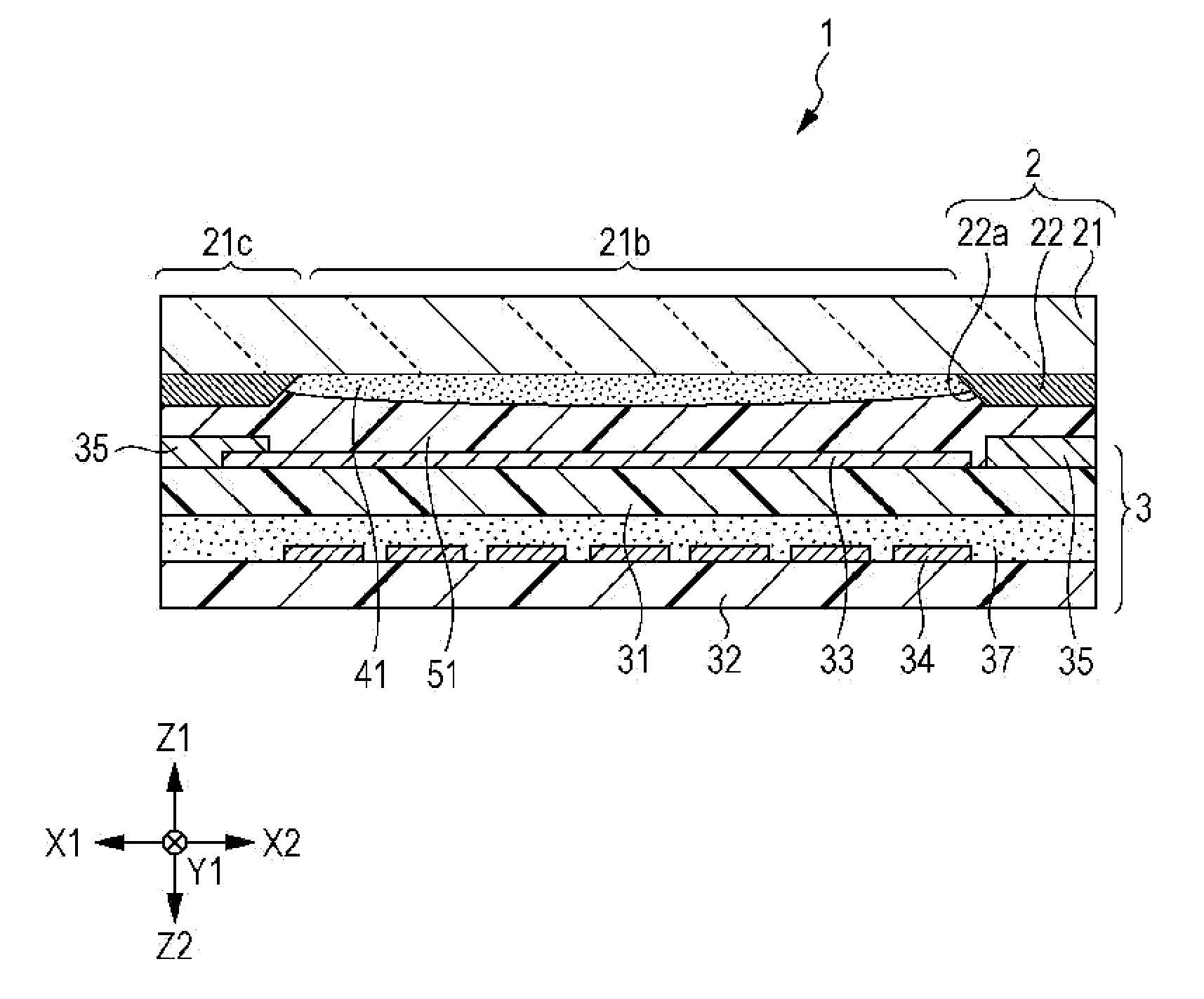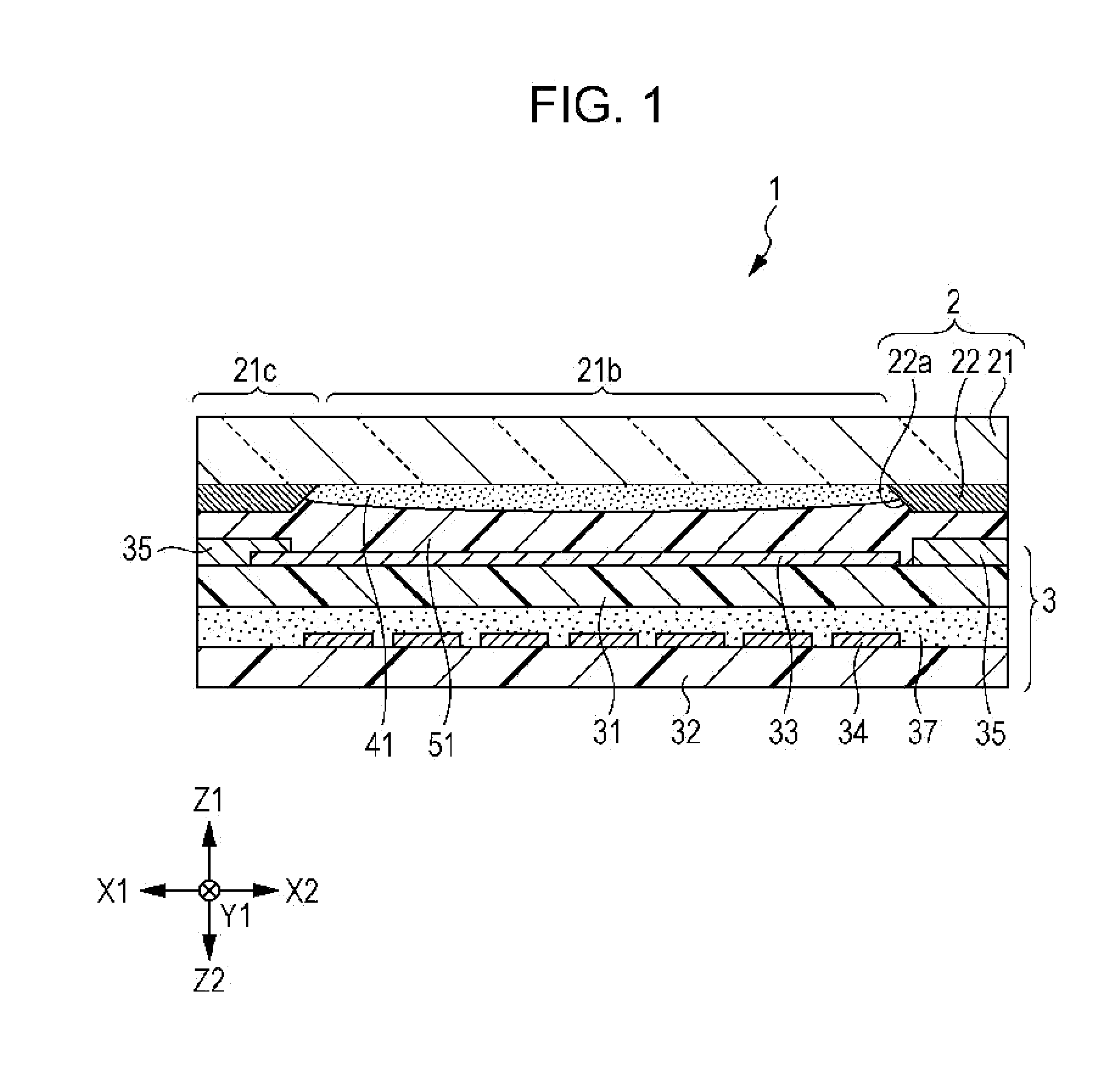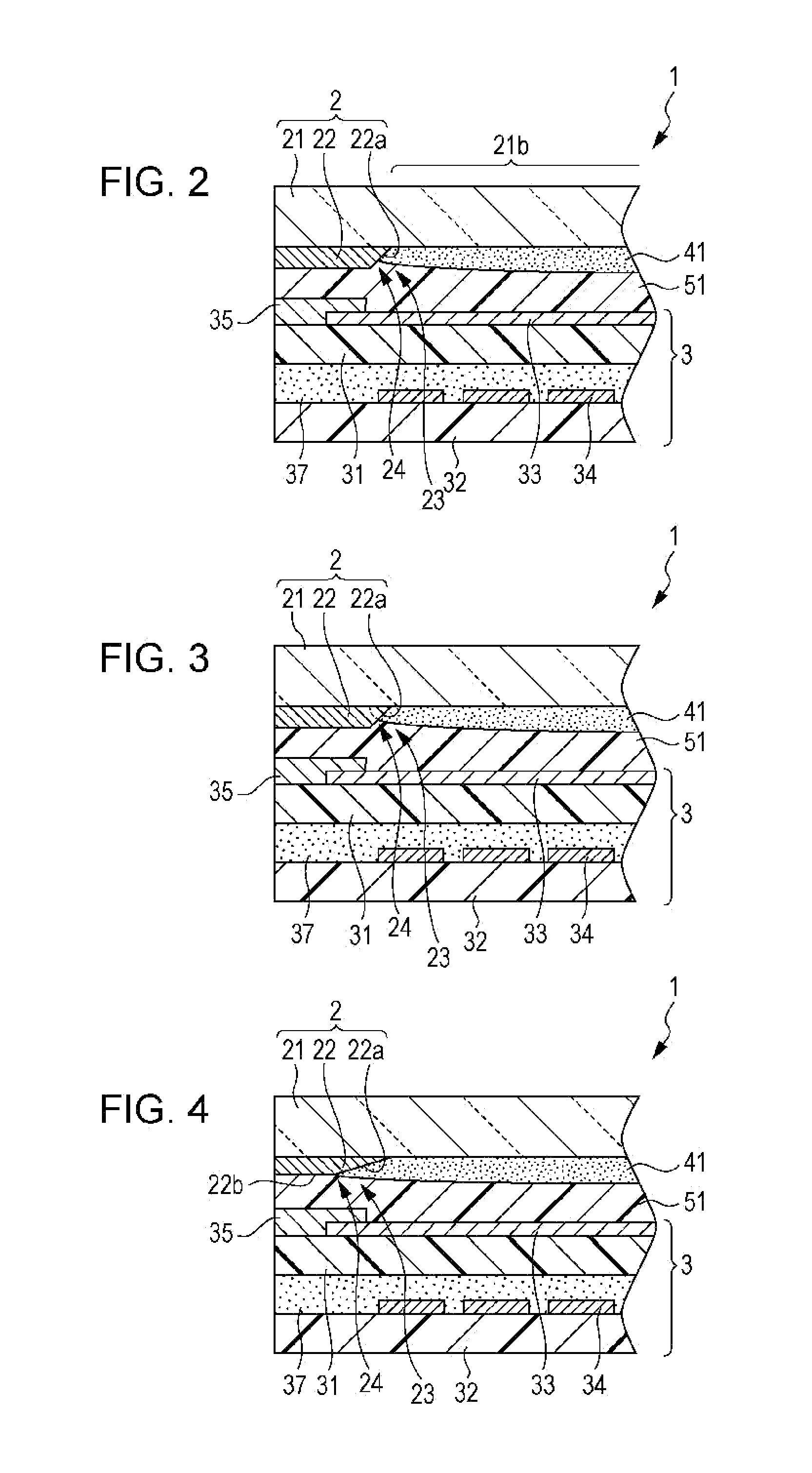Input device and method of producing input apparatus
a technology of input device and input device, which is applied in the direction of instruments, fluid pressure measurement, synthetic resin layered products, etc., can solve the problems of reducing reliability, affecting the operation of the input device, so as to achieve the effect of easy production of good visibility to the operator, extremely precise thickness of decorative layer, and easy control of thickness of transparent filler
- Summary
- Abstract
- Description
- Claims
- Application Information
AI Technical Summary
Benefits of technology
Problems solved by technology
Method used
Image
Examples
first embodiment
[0049]FIG. 1 is a sectional view of an input device 1 according to a first embodiment of the present invention. The input device 1 is mounted on a display unit in any electronic apparatus among a variety of electronic apparatuses, such as mobile phones and portable information terminals, such that the input device 1 covers the display screen of a display device, such as a liquid crystal panel. An operator can visibly confirm images on the display device through the input device 1 and can perform input operation by directly touching the display screen.
[0050]As illustrated in FIG. 1, the input device 1 includes a sensor member 3 configured to detect input position information and a protective member configured to protect the surface of the sensor member 3. The sensor member 3 and the protective member 2 are bonded together with a transparent filler 41 and an adhesive layer 51 interposed therebetween.
[0051]The sensor member 3 is a capacitance touch sensor configured to detect input pos...
second embodiment
[0079]FIG. 7 is a sectional view of an input device 1 according to a second embodiment. In the input device 1 of the second embodiment, similar to that of the first embodiment, a protective member 2 and a sensor member 3 are bonded together with a transparent filler 41 and an adhesive layer 51 disposed therebetween, and the sensor member 3 constitutes a capacitance touch sensor.
[0080]In the second embodiment, a first wiring pattern 35 is disposed on the periphery of the first sensor substrate 31, and a protective layer 42 covers the top of the first wiring pattern 35. In the input device 1, to increase a light-transmissive region 21b, the first wiring pattern 35 has fine wiring such that a non-transmissive region 21c is decreased. Therefore, the protective layer 42 is provided on the first wiring pattern 35 to prevent wire breaking and short-circuiting. The protective layer 42 is made of the same resin as the transparent filler 41 using a printing method, such as screen printing or ...
third embodiment
[0083]FIG. 8 is a sectional view of an input device 1 according to a third embodiment. As illustrated in FIG. 8, a sensor member 3 in the third embodiment constitutes a resistive touch sensor. In the sensor member 3 in this embodiment, a first sensor substrate 31 and a second sensor substrate 32 oppose each other with a spacer 38 interposed therebetween. A first electrode pattern 33 and a second electrode pattern 34 are respectively disposed on the opposing surfaces of the first sensor substrate 31 and the second sensor substrate 32.
[0084]The first sensor substrate 31 disposed on the input-surface side is made of a flexible film of a transparent resin, such as polyethylene terephthalate (PET), and is deformable in response to input operation. The thickness of the first sensor substrate 31 is in the range of approximately 100 to 200 μm, e.g., 188 μm. The second sensor substrate 32 is made of transparent resin, such as polycarbonate (PC), polyethylene terephthalate (PET), polyether su...
PUM
| Property | Measurement | Unit |
|---|---|---|
| angle | aaaaa | aaaaa |
| angle | aaaaa | aaaaa |
| thickness | aaaaa | aaaaa |
Abstract
Description
Claims
Application Information
 Login to View More
Login to View More - R&D
- Intellectual Property
- Life Sciences
- Materials
- Tech Scout
- Unparalleled Data Quality
- Higher Quality Content
- 60% Fewer Hallucinations
Browse by: Latest US Patents, China's latest patents, Technical Efficacy Thesaurus, Application Domain, Technology Topic, Popular Technical Reports.
© 2025 PatSnap. All rights reserved.Legal|Privacy policy|Modern Slavery Act Transparency Statement|Sitemap|About US| Contact US: help@patsnap.com



